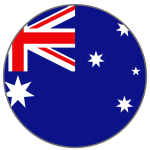Highlights:
-
Earlier-than-expected U.S. trade agreements with China and the U.K. are trimming downside economic growth risks, but the average U.S. tariff rate at above 13% is still the highest since the 1930s.
-
The outlook for Canada has changed little from a month ago, but risks are tilting less to the downside as exporters face the lowest U.S. tariffs globally. The Bank of Canada’s interest rate cuts last year are supporting growth with a lag, and additional fiscal stimulus could be in the pipeline.
-
We continue to expect the BoC and U.S. Fed to cut interest rates further this year, though think the former is nearing the end of its easing cycle, and the latter will only start cutting in September once data in the U.S. has weakened enough.
-
Issue in focus: Financial market fallout from U.S. tariffs have raised concerns about the reserve status and safe haven feature of the U.S. dollar and its assets. It’s too early to tell if trends seen in early April will persist, but the macroeconomic impact if they did is to raise costs and slow spending for U.S. consumers and the government. Slower growth in the U.S. would spill over to its close trading partners like Canada.
Forecast changes:
We are surprised that we aren’t more surprised. The weeks after a barrage of U.S. trade announcements in March and April have been calmer, and there are now early signs of the trade war de-escalating.
New tariffs on auto parts for early May were diluted, critically for parts from Canada and Mexico that are compliant with the CUSMA/USMCA being exempted. Larger country-by-country reciprocal tariffs remain on hold and the most disruptive 100%+ tariffs on bilateral trade between China and the U.S. were sharply reduced earlier than anticipated.
The de-escalation took more extreme measures off the table, but also left the bulk of tariffs on most U.S. trade partners intact. Over three quarters of U.S. imports are still facing a minimum of 10% tariffs. Details of early trade negotiations with China and the U.K. suggest cuts below the 10% minimum tariff rate could be more difficult.
Overall, developments since early April have been broadly consistent with our base case assumption that tariffs would moderate later in 2025 but won’t disappear. We view them as positive enough to warrant moderate upgrades to our economic forecasts, but don’t see them as gamechangers for the broader outlook of growth slowing significantly in the U.S. and Canada this year.
We also continue to caution that the outlook remains nearly entirely contingent on U.S. trade policy, which is highly unpredictable, but expect less downside risks to our base case compared to a month ago. With all that in mind, here are the forecast changes we made this month.
-
U.S. growth forecasts are revised slightly higher. Q1 GDP growth came in largely as expected (-0.3% versus our -0.5% forecast) but we have revised our Q2 growth higher on firmer consumer spending data near the end of Q1 and resilient jobs growth in April. We have made slight upgrades to growth in the second half of the year reflecting an earlier-than-expected reduction in U.S. tariff rates so far.
-
Unemployment rates will keep rising in the U.S. in 2025. U.S. labour markets remained relatively resilient in April. But hiring demand has slowed as seen in a persistent drop in job openings. And that means the unemployment rate is expected to drift higher to a 4.7% peak (lower than the 4.8% previously assumed.)
-
Canadian GDP growth and unemployment rate projections are little changed. Canadian labour markets turnout has been weaker than expected with the unemployment rate rising to 6.9% in April from 6.6% in January. Positive trade developments have led to a small upgrade in our GDP growth projections. Softer backward-looking data and stronger outlook are netting out to an the unemployment rate projection that’s largely unchanged. We still expect it will edge up to a peak of 7.1% later this year.
-
Inflation will rise more in the U.S. than in Canada. Tariffs are expected to drive up input costs for producers and prices for consumers on both sides of the border, but more in the U.S. A much bigger share of U.S. imports (at least 75%) are facing severe tariffs, compared to less than 10% of imports that are subject to retaliatory tariffs in Canada (more details in this Issue in Focus).
-
We continue to expect further rate cuts from the BoC and Fed this year, despite them being in different positions now. The BoC is near the end of its rate cutting cycle – we expect two more cuts as the benefit of 225 basis points of cuts in the system continues to work through the economy. Importantly, the BoC has policy flexibility, as inflation remains around target and the unemployment rate rises.
The Fed has far less room in the near-term as U.S. inflation remains too high and above target. By September, we expect the central bank will have seen sufficient softness in the economy to begin a steady rate cutting sequence with three interest rate cuts this year and a drop to 2.75% – 3%—about neutral by the end of 2026. The risk, however, is that they cut less as inflation weighs more heavily on their dual mandate.
Central Bank
Current Policy Rate
(Latest Move)
Next Move

BoC
2.75%
0 bps in Apr/25
-25 bps
Jun/25
Backward looking economic data at the onset of the trade conflict was a mixed bag, as the labour market weakened substantially with the unemployment rising to near 7%, but broader consumer spending remained more resilient. With over 200 bps of rate cuts already in the hopper, we continue to expect the BoC is close to a terminal. Our estimate of a terminal rate is left unchanged at 2.25%.

Fed
4.25-4.50%
0 bps in May/25
0 bps
Jun/25
The Fed is firmly stuck in “wait and see” mode against a highly volatile trade policy backdrop. In the May meeting, it kept the Fed funds rate unchanged while repeating the need for patience to assess the impact of the trade shock on its dual mandate. We expect deterioration in hard data later this year will drive the Fed to react with rate cuts in September, October and December.

BoE
4.25%
-25 bps in May/25
0 bps
Jun/25
The Bank of England cut the Bank Rate by 25 bps in May while maintaining its “gradual” approach for future decisions. The vote split was more dovish than we expected. The accompanying monetary policy report forecasts showed only marginal impact on growth and inflation from U.S. trade policy. We expect two more cuts from the BoE in August and November for a terminal rate of 3.75%.

ECB
2.25%
-25 bps in Apr/25
-25 bps
Jun/25
The European Central Bank cut its policy rate by 25 bps in April with less resistance from members than expected. New strategy from the ECB is focused on “agility” meaning the path forward is less predictable and more dependent on new tariff announcements and signals the economy is slowing. We expect downside growth risks will push the ECB to cut twice more in June and September for a terminal rate of 1.75%.

RBA
4.10%
0 bps in Apr/25
-25 bps
May/25
We expect the Reserve Bank of Australia to cut again in May after a first cut in February and a hold in April. The RBA should have more room to respond to increasing downside risk to growth with underlying inflation now back within target and the labour market broadly easing. We expect three more cuts in May, August and November this year that will leave the terminal rate at 3.35%.
Issue in focus: Less demand for U.S. assets and dollar could exacerbate trade shock pain
U.S. trade policies are threatening to disrupt global trading patterns and have also raised concerns about the long-held safe haven status of U.S. dollar assets and the reserve status of the U.S. currency during times of uncertainty.
Contrary to typical trends, both the U.S. dollar and U.S. bond prices lost value in the immediate aftermath of reciprocal tariff announcements in early April. Markets have calmed after the U.S. administration hit pause on larger reciprocal tariffs, and toned down rhetoric around potentially firing Fed Chair Jerome Powell. But, the U.S. dollar is still weaker on a trade weighted basis than in January.
The BoC noted in its 2025 Financial Stability Report that events of last month are a reminder that policies which significantly disrupt global trade could also have significant impact on financial markets. In this case, it could “increase the risk premium that investors require to hold U.S. assets.”
We think this adjustment, which is not imbedded in our base case forecast, could exacerbate the negative impact of the trade shock on the U.S. economy if it materializes.
Loss of safe haven status could increase costs for U.S. consumers and governments…
In the past, some in the U.S. administration have argued that a weaker U.S. dollar is a key driver of persistent U.S. trade deficit. There’s some truth in that—a strong dollar, all else equal, makes it cheaper for U.S. buyers to import, while reducing the competitiveness of U.S. exports. But, that’s not the whole story.
The flip side is that a stronger greenback and low treasury yields over time have effectively been subsidizing U.S. spending, lowering prices for consumer purchases and interest costs for the federal government. This has allowed the U.S. economy to remain a net borrower from the rest of the world for decades without seeing a current account reset.
Unwinding the premium historically attached to U.S. dollar assets internationally is unlikely to happen quickly, but as it occurs could raise costs for U.S. consumers and governments by making consumption of imports more expensive and adding to the already high level of government interest payments.
…Potentially offsetting government tariff revenues
Most net borrowing in the U.S. economy is done by the federal government. With debt at more than 120% of GDP in fiscal 2024, and an annual budget deficit that was the largest in history outside of a war or major recession, interest payments from the federal government are already enormous.
Current estimates on DOGE spending cuts still need to be verified, and excluding those, a 15% average tariff is expected to raise about between US$1.5 to $3.2 trillion in revenue over the next 10 years. For context, it would take roughly a 50 basis point increase in government borrowing costs (persistently over the next ten years) to fully offset those tariff revenues in the form of higher government debt payments.
Additionally, an appreciation of the U.S. dollar before April was supposed to help partially offset some of the impact to domestic input costs from tariffs and smooth the impact on consumer prices. A weaker dollar could do the opposite, exacerbating the inflation shock that’s already expected to be large in the U.S. this year.
Indeed, a weaker U.S. dollar and any loss of safe haven status for U.S. assets may very well yield a smaller trade deficit, but only in a backdrop where U.S. domestic demand is substantially weaker and growth in the economy slower. It would have negative implications for the short-term U.S. economic outlook, and the outlook for close U.S. trading partners like Canada that rely heavily on U.S. spending for production and growth.
About the Authors
Nathan Janzen is an Assistant Chief Economist, leading the macroeconomic analysis group. His focus is on analysis and forecasting macroeconomic developments in Canada and the United States.
Claire Fan is an economist at RBC. She focuses on macroeconomic analysis and is responsible for projecting key indicators including GDP, employment and inflation for Canada and the US.
This article is intended as general information only and is not to be relied upon as constituting legal, financial or other professional advice. The reader is solely liable for any use of the information contained in this document and Royal Bank of Canada (“RBC”) nor any of its affiliates nor any of their respective directors, officers, employees or agents shall be held responsible for any direct or indirect damages arising from the use of this document by the reader. A professional advisor should be consulted regarding your specific situation. Information presented is believed to be factual and up-to-date but we do not guarantee its accuracy and it should not be regarded as a complete analysis of the subjects discussed. All expressions of opinion reflect the judgment of the authors as of the date of publication and are subject to change. No endorsement of any third parties or their advice, opinions, information, products or services is expressly given or implied by Royal Bank of Canada or any of its affiliates.
This document may contain forward-looking statements within the meaning of certain securities laws, which are subject to RBC’s caution regarding forward-looking statements. ESG (including climate) metrics, data and other information contained on this website are or may be based on assumptions, estimates and judgements. For cautionary statements relating to the information on this website, refer to the “Caution regarding forward-looking statements” and the “Important notice regarding this document” sections in our latest climate report or sustainability report, available at: https://www.rbc.com/community-social-impact/reporting-performance/index.html. Except as required by law, none of RBC nor any of its affiliates undertake to update any information in this document.


